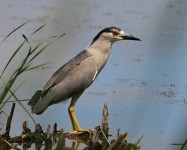
Photographs from Horicon Marsh, Fond du lac/Dodge County, Wisconsin taken July 29, 2013.
To view the full gallery of images, please click here.

Photographs from Horicon Marsh, Fond du lac/Dodge County, Wisconsin taken July 29, 2013.
To view the full gallery of images, please click here.
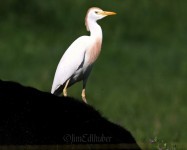
The Cattle Egret is one of my nemesis birds this year. After many miles of driving through areas where Cattle Egrets had been reported, this was my first real chance to photograph one. This time it did not disappoint me. I saw not one bird, but two. They were in a double pasture with cows just northeast of Horicon Marsh on Stumpf Road in Fond du lac County, Wisconsin.
I’ve also included images of some Wilson’s Phalaropes (Phalaropus tricolor) from Horicon Marsh.
Photographs taken July 23, 2013.
Binomial name: Bubulcus ibis
Category: Bitterns, Herons, and Allies
Description: White plumage with cream-colored feathers on its chest, head, and tail during breeding season. Yellow bill and gray legs.
Size: 18”-22” long, 35” – 38” wingspan
Weight: 9.5 oz. – 18 oz.
Habitat: Pastures, grasslands, meadows, and wetlands
Diet: Insects (grasshoppers and crickets), spiders, amphibians, and worms
Nesting: Cattle Egrets nest in colonies, typically near a body of water. Both males and females build the nest; males collect twigs and sticks while the female assembles them into jumbled pile in a tree or shrub. It is common for these birds to steal nest materials from others. The female will lay 1 to 5 eggs and raise 1 brood each season. Both parents incubate the eggs. Chicks are born with down feathers but are still helpless. The fledglings leave the nest after about 45 days.
Notes: Cattle Egrets are appropriately named as they tend to forage for food near cattle or other large, grazing animals. They eat insects and other vertebrates spread by these animals. The birds have also been known to forage behind farm machinery. Farmers may welcome these birds to their pastures as Cattle Egrets will help control fly and tick populations among cattle.
To view the full gallery of images, please click here.
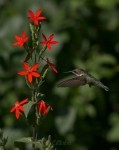
I had another opportunity to photograph the Ruby-throated Hummingbird in my backyard, this time enjoying Royal Catchfly (Silene regia). As I mentioned in my last post on this fascinating species (Ruby-throated Hummingbird on Bee Balm), these hummingbirds favor red tubular flowers most of all. Royal Catchfly, a native of Missouri, is an excellent candidate here.
Photographs taken July 21, 2013 in Waukesha County, WI.
To see the full gallery of images, please click here.
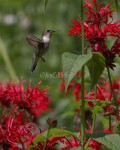
Just this week, I had the chance to photograph a Ruby-throated Hummingbird on Bee Balm at length in our yard in Waukesha, WI. The action I captured was of the Ruby-throated Hummingbird repeatedly visiting a bed of Red Bee Balm in our yard. This solitary species is enjoyable to watch as it darts, hovers, rotates, perches, and flies both forwards and backwards (Hummingbirds are the only bird species currently known to fly backwards). They favor red tubular flowers for nectar as is demonstrated by the vibrant Red Bee Balm pictured (Monarda didyma).
Pictures taken on July 15, 2013 in Waukesha County.
Binomial name: Archilochus colubris
Category: Hummingbirds
Description: Metallic green feathers on back, grayish-white on underparts. Males have a vibrant red throat which may appear dark in poor lighting. Wings are dark gray, almost black. Long, slender bill is black in color and mostly straight with a slight curve at the tip.
Size: 2.8″-3.5″ long, 3” – 4” wingspan
Weight: 0.071 oz. – 0.21 oz.
Habitat: Broadleaf and pine forests, orchards, meadows, parks, and gardens
Diet: Tree and flower nectar, small insects, and spiders
Nesting: The female provides all parental care, building a nest in a protected tree or shrub on a slightly downward-sloping limb. They favor deciduous trees such as oak, birch, or poplar. The nest is made out of bud scales, lichen, spider silk, and dandelion or thistle down. The same nest may be used year after year with the female making annual repairs. The female will lay 1-3 eggs at a time, laying eggs once or twice per summer. The young remain in the nest for 22-25 days.
Notes: A list of just some of the of native wildflowers we have planted in our yard to attract these exquisite tiny birds are: Red Bee Balm (Monarda didyma), Wild Bergamot (Monarda fistulosa), Cardinal Flower (Lobelia cardinalis), Wild Columbine (Aquilegia canadensis), Royal Catchfly (Silene regia), Butterfly Milkweed (Ascelpias tuberose), Hoary Vervain (Verbena stricta), Nodding Onion (Allium cernuum), Penstemon species, Echinacea species.
To see the full gallery of images, please click here.
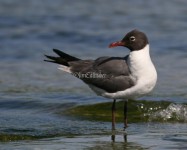
Binomial name: Leucophaeus atricilla
Category: Gulls, Terns, and Skimmers
Description: White body with dark gray back and wings with a black head. In the winter, the black head will fade to white. Dark red bill and legs.
Size: 14” – 16” long, 39” – 43” wingspan
Weight: 7 oz. – 13 oz.
Habitat: Coastal shorelines, beaches, ponds, and marshes
Diet: Insects, earthworms, snails, fish, squid, crabs, berries, garbage
Nesting: They nest in large colonies (up to 50,000 birds) on beaches or other shorelines. The nest is made of grasses and is usually built on the ground (or on rocks or dead plant materials) by both the male and female. Sometimes the male will build a nest in hopes of attracting a suitable breeding partner. The female will lay 1 brood per season with 3-4 eggs. She will incubate the eggs for 21 days.
Notes: The name “laughing gull” comes from its call which sounds like a high-pitched laugh.
To view the full gallery of images, please click here.
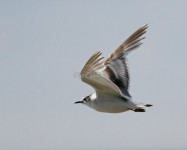
Binomial name: Hydrocoloeus minutus
Category: Gulls, Terns, and Skimmers
Description: Light gray body, gray wings with white wingtip and a black head. In the winter, the black head will fade to white. Dark red legs and a black bill.
Size: 10” – 12” long, 24” – 31” wingspan
Weight: 2.4 oz. – 5.7 oz.
Habitat: Freshwater shorelines of lakes, ponds, rivers, and marshes
Diet: Flying insects, fish, crayfish, snails, and leeches
Nesting: The nest is made of floatable grasses or other vegetation and is usually built on the ground adjacent to shallow water. The female will lay 1 brood per season with 1-4 eggs. Although the chicks are able to begin leaving the nest after only 3 days, they take 3 years to reach maturity.
Notes: Commonly found across Europe and Asia, Little Gulls are rare birds in North America. However, their numbers have been increasing since the 1960’s and they are regular visitors to both the East Coast and the Great Lakes of the Midwest. They may be seen in flocks with Bonaparte’s Gulls.
To view the full gallery of images, please click here.
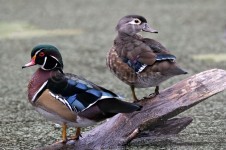
I came across a small pond in northwest Waukesha County that had about a dozen Wood Ducks, male and female. Images were taken on September 19, 2012.
Binomial name: Aix sponsa
Category: Ducks, Geese, and Swans
Size: 18.5” long, 30” wing span
Weight: 1.3 lb
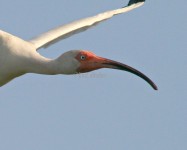
This White Ibis was was found and reported by a local birder in Racine, WI. The location was the Wolf Lake boat landing at Richard Bong State Recreation Area in Kenosha County, WI. Since the White Ibis was so far from its natural range, I knew I had to make the trip down to Bong SRA. When I arrived early in the morning, it was viewable from the boat landing but a long ways off. I spent at least 5 hours there trying to get some nice pictures as it moved around the drained lake bed from one spot to another. Because of the locations of the bird and the bright sun light, I knew a return trip would be required. The next morning I returned and the bird was in a different location than the previous day. I had better views and even took a short video. The White Ibis was a new life bird for me. It is a beautiful bird and I was glad I made the trips to see it.
Photographs were taken on June 11, 2013.
Binomial name: Eudocimus albus
Category: Ibises and Spoonbills
Description: White feathers with black wingtips (typically only visible during flight), long red legs and red bill with a downward curve
Size: 22” – 27”
Weight: 26.5 oz. to 37 oz.
Habitat: Marshes, ponds, wetlands, and wet lawns
Diet: Insects, crayfish, and small fish
Nesting: Males secure and deliver nesting materials while the female constructs the nest, usually in a tree or shrub, sometimes over water. The female will lay 1 – 5 eggs which are then incubated by the male. During the incubation period, he will aggressively defend the nest, even going into a pattern of starvation. 2-3 weeks later, the eggs hatch both parents will feed and care for the fledglings.
Notes: The White Ibis congregates in huge flocks for feeding, nesting, and roosting. Despite their social nature, Ibises typically insist on grooming themselves rather than engaging in allopreening. In fact, nearly half their day may be spent on resting and roosting activities which includes bathing, preening, and grooming their feathers.
To see the full gallery of images, please click here.
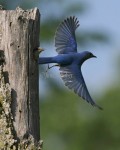
While out doing some normal birding in the South Kettle Moraine I came across an Eastern Bluebird nest in a natural cavity. They were feeding the young on a regular basis. I set for some shooting under a honeysuckle bush to capture some of the action. On one set of images a female comes out of the bluebird house with some new bugs that the male had just brought her, only to do a 360° turn right back into the house to feed the young.
Photographs were taken on May 30, 2013.
Binomial name: Sialia sialis
Category: Thrushes
Description: Both male and female birds have blue plumage on top with rusty-colored throat and breast. However, the male enjoys a much brighter blue color compared to the female’s pale blue feathers. The female also has a gray head.
Size: 6.3″-8.3″ long, 9.8” – 13” wingspan
Weight: 1.0 oz. – 1.2 oz.
Habitat: Forests adjacent to meadows or with clearings and near lakes or rivers
Diet: Insects (grasshoppers, beetles, crickets), spiders, snails, and wild fruit and seeds
Nesting: Eastern Bluebirds seek out nesting areas abandoned by other birds such as woodpecker holes. The female will build the nest over the course of 1-2 weeks using feathers and plant materials. She will lay 3-7 eggs at a time, raising 2 broods over the course of a summer. Both parents will feed the young for 2-3 weeks before the fledglings leave the nest.
Notes: If you can offer a suitable habitat with trees and a water source, invite Eastern Bluebirds into your backyard with a nestbox. Click here for a blueprint and more information on this easy DIY project.
To see the full gallery of images, please click here.
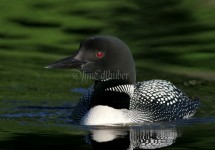
On a recent trip to Sawyer County in Northern Wisconsin, I had the opportunity to photograph Common Loons. This graceful bird has an enchanting call that has inspired numerous Native American tales and even a novel. The Common Loon has been featured on Canadian currency and is also the state bird of Minnesota.
I have also included some images taken last summer at the same location.
Binomial name: Gavia immer
Category: Loons
Description: Black head with black and white checkered body in summer for breeding season; brown and white body in the winter. Blackish-blue bill that is held horizontally and black feet.
Size: 24″-40″ long, 4′ – 5′ wingspan
Weight: 4 lbs. – 8 lbs.
Habitat: Large lakes and shorelines
Diet: Fish (perch, trout, sunfish, bass)
Nesting: Usually nests on small islands or other locations safe from land-based predators. The nest may be made out of thin sticks, dried grasses, or a depression in mud or sand. Typically 1 to 3 eggs will be laid at one time and will be incubated by both parents. The parents aggressively protect their nests and share the responsibility of feeding the young. Baby loons may be seen riding on the back of either parent in the water.
Notes: The Common Loon has legs positioned in the rear of its body. This makes for excellent diving and graceful swimming; however, it also makes for awkward landings and clumsy walking. In fact, Loons require a “runway” spanning 30 yards or 1/4 mile for take-off and landing AND it can only be done in water. Loons have actually been stranded in small ponds, icy lakes, or even a parking lot without a suitable runway and must be rescued.
To see the full gallery of images, please click here.
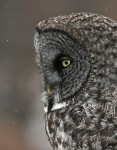
This Great Gray Owl was reported by a local resident. Two days after the posting, I made the run up to Mauston very early in the morning. The exact location of this owl was not given but I had a hunch on where the location was. Two other bird parties arrived early and the bird was located after an hour of searching. I spent the better part of the day enjoying great looks of this bird along with a couple other birders as the bird stayed most of the day with in viewing area. I was able to record a short video, too. When it did disappear, it was only for a short period time. Photographs taken February 27, 2013 in Mauston, WI.
Binomial name: Strix nebulosa
Category: Typical Owls
Description: Gray feathers in various shades cover the body. The upper parts are gray with pale streaks while the underparts are gray with dark streaks. Yellow eyes surrounded by dark circles.
Size: 24” – 33” long, 55” – 60” wingspan
Weight: 1.3 lbs. – 4.2 lbs.
Habitat: Conifer and pine forests, near open areas such as meadows or wetlands
Diet: Rodents (especially voles), hares, weasels, thrushes, grouse, and ducks
Nesting: Great Gray Owls do not build nests. They may occupy a nest previously built by other large birds such as hawks or other raptos. They may also nest in broken tree tops or empty tree cavities. A female usually lays 2 to 5 eggs and raises 1 brood per season. Only the female incubates the eggs and the incubation period lasts about 30 days. The male will hunts for enough food to feed both the female and the chicks until they become fledglings, 3 to 4 weeks after hatching.
Notes: The Great Gray Owl has a highly developed sense of hearing which is vital to hunting. They may even locate and capture prey moving beneath snow or ice, plunging through to make the catch.
To see the full gallery of images, please click here.
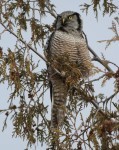
The Northern Hawk Owl is an uncommon visitor to Wisconsin. This bird had a long stay of 4+ months in Door County, Wisconsin near Sister Bay. This bird’s normal range is Canada; the southern border of the range is the most northern edge of Minnesota. Photographs taken February 13, 2013.
Binomial name: Surnia ulula
Category: Typical Owls
Description: Dark brown feathers with cream-colored spots on upper parts; black plumage on the back of the neck. Underparts and tail feathers are cream with brown bands. Eyes and beak are yellow.
Size: 14” – 18”, 18” wingspan
Weight: 10.5 oz.
Habitat: Deciduous and coniferous forests near open areas such as clearings, meadows, and swamps
Diet: Rodents (especially voles), hares, weasels, thrushes, grouse, and finches
Nesting: Both parents build a nest, normally in the top of dead conifers or hollow stumps or, more rarely, on cliffsides. The female lays 3 to 11 eggs and does most of the incubating while the male hunts. After 25 to 30 days, the chicks will hatch and the female will hunt while the male guards the nest. After about 3 weeks, the fledglings will begin to leave the nest.
Notes: Northern Hawk Owls are considered a rare bird due to their low population density and remote nesting habitats. However, if you are lucky enough to find one, they may allow you to approach quite closely. They are unusually tolerant of humans. But, if it is breeding season, the males tend to get quite aggressive while defending their young. Approach with caution.
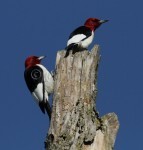
I came across a pair of Red-headed Woodpeckers in the South Kettle Moraine near Eagle Wisconsin. It appeared they were setting their sights on a dead oak tree, a place to raise young this year. I watched this pair for almost 2 months and almost daily. I started observing them when they started cleaning out an existing hole in a dead tree. They were getting it ready for the egg laying. As days went by they started bring food to the young. As the young got older they became visible in the hole opening. One thing I’ve noticed photographing these birds was that they took the food into the nest early on. As they chicks got bigger, as they brought the food to the young, they started making the young come closer to the hole opening for it. At the end just before the young left the nest hole, they made the young almost come out of the hole for the food. I noticed too that the adults both feed the young. The adults brought in all different types of food weather it was grasshoppers, daddy long legs, berries, larvae or what ever. That way when the young finally left the nest, they knew exactly what their diet should consist of. It was a truly amazing experience to see this all happen over a period of almost 2 months. I was there the day the young birds finally left the nest hole. I captured one flight out of the hole. Off the birds went and after that day, a big storm came through. Not sure whatever happened to the young birds that fledged the nest as I never saw them again. I did see adults after that day, maybe the adults took them off to a place on their own, not sure. Images were taken over a period from the beginning of May 2012 into the beginning of July.
Binomial name: Melanerpes erythrocephalus
Category: Woodpeckers and Allies
Description: Red head with black back and white underparts. The wings are black with white wingtips. Adult males and females have identical plumage (sexually monomorphic).
Size: 7.5″- 9.8″ long, 16.7” wingspan
Weight: 2.0 oz. – 3.4 oz.
Habitat: Deciduous and coniferous forests, orchards, swamps, wetlands, and farmland
Diet: Insects, fruits, berries, nuts, and seeds
Nesting: Nests are built by both partners in cavities of dead trees or utility poles. The males do most of the cavity excavation. Females lay 3 to 10 eggs at one time, up to two broods per season. The first brood is laid in May and incubated for 2 weeks, and hatchlings remain in the nest for 24 to 31 days. Red-headed Woodpeckers often reuse the same nesting cavity year after year.
Notes: The Red-headed Woodpecker stores food, only one of four species in North American known to do so. It may hide nuts, seeds, and insects. In fact, Red-headed Woodpeckers awesome store grasshoppers still alive, stuck in tight crevices or covered with bark. The Red-headed Woodpecker was also featured on a stamp from the United States Postal Service in 1996 and from 1999 – 2006.
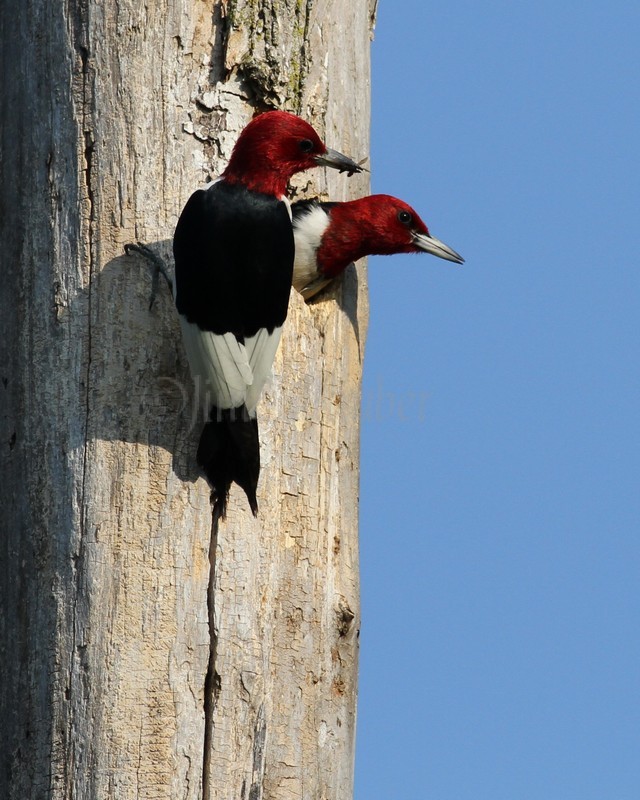
An adult to leave the nest hole while the other adult is ready to bring in the next food for the young
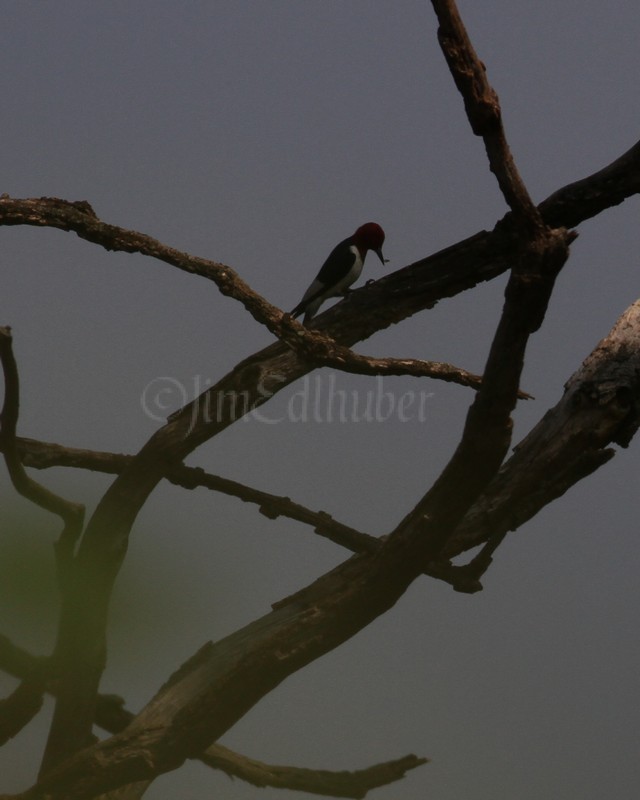
An adult off in a distance from the nest. This happens sometimes as they prepare the food before bringing it into the nest hole to eat. It may be compacted some what of whatever the bird does at this time in preparation
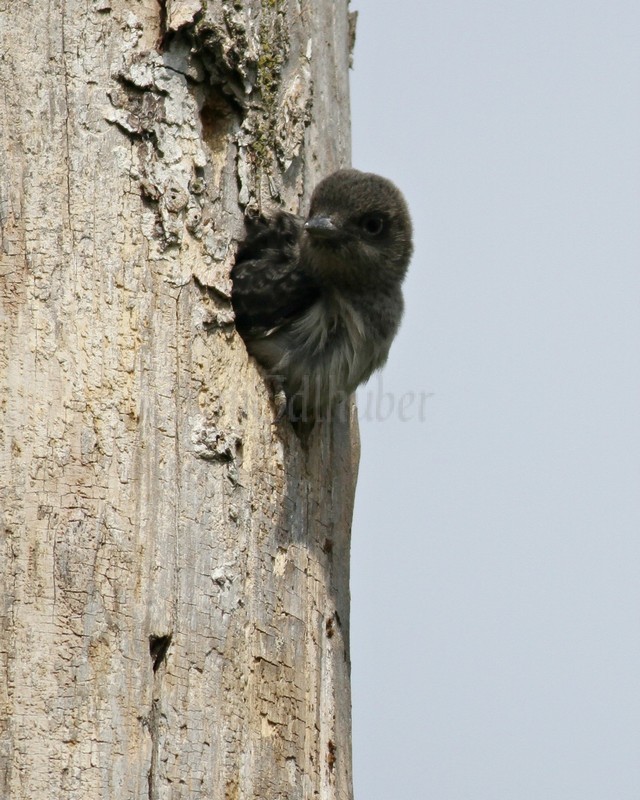
A young Red-headed Woodpecker sticks its head out of the nest hole waiting for an adult to bring in the next food
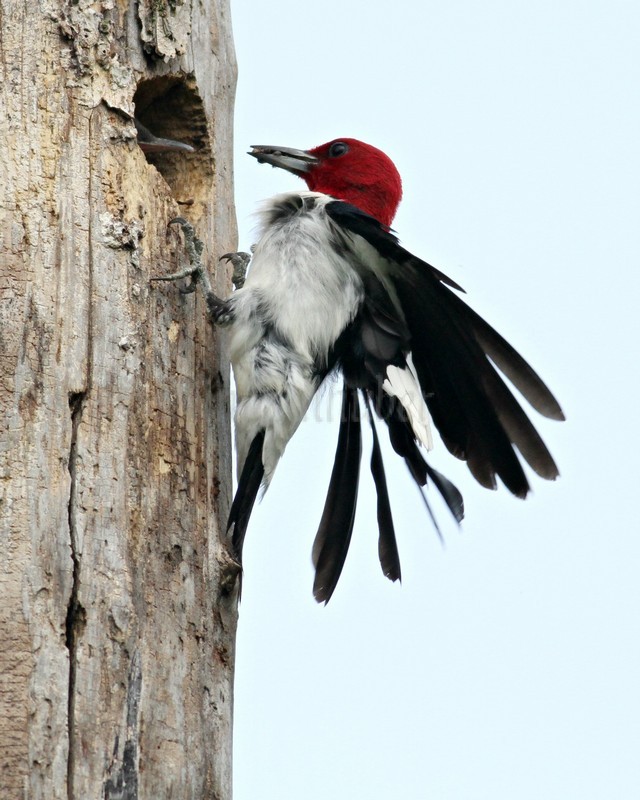
Adult bringing food to the young. As I noted, the adults draw the young closer to the nest hole opening till they are just about out of the hole to get the food
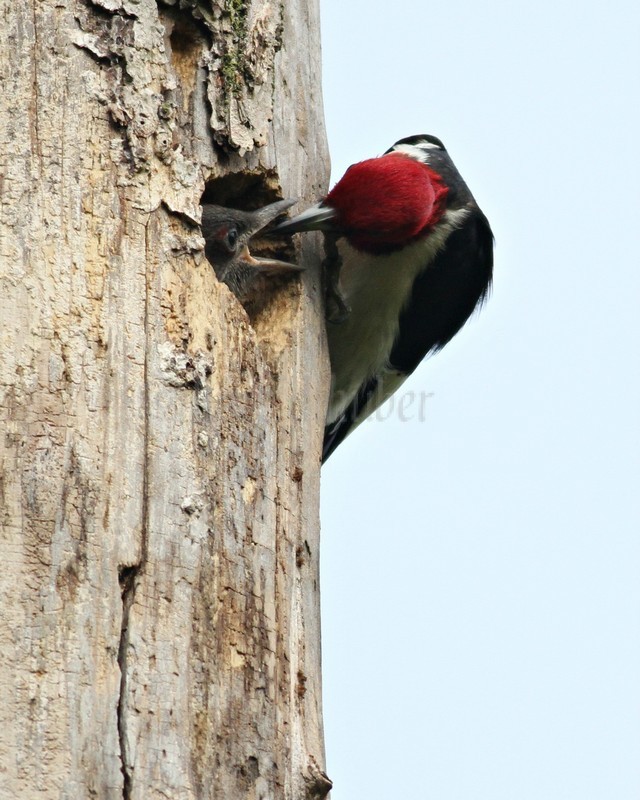
Adult bringing food to the young. As I noted, the adults draw the young closer to the nest hole opening till they are just about out of the hole to get the food
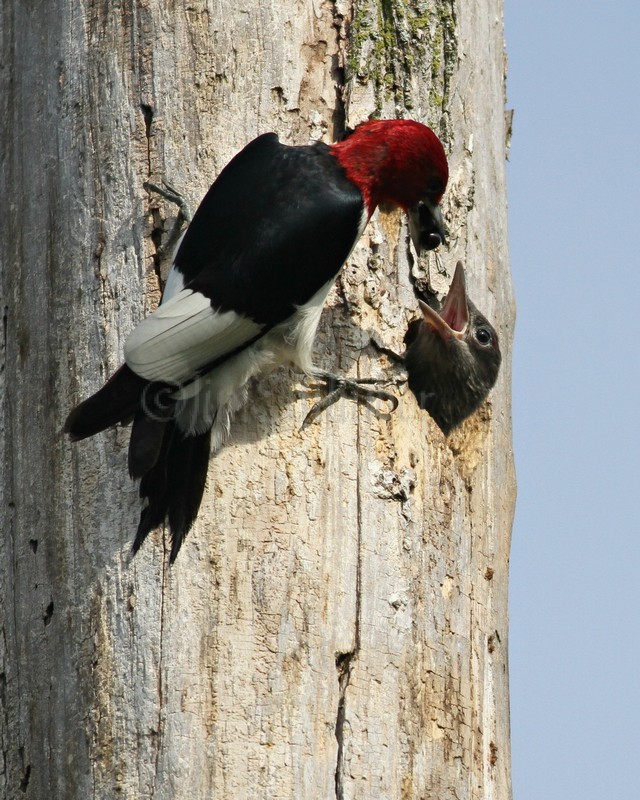
Adult bringing food to the young. As I noted, the adults draw the young closer to the nest hole opening till they are just about out of the hole to get the food
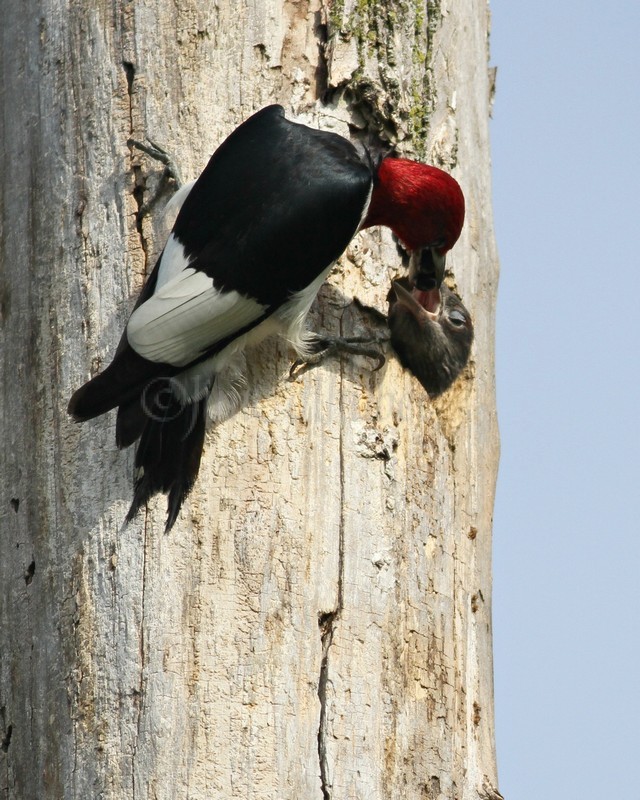
Adult bringing food to the young. As I noted, the adults draw the young closer to the nest hole opening till they are just about out of the hole to get the food
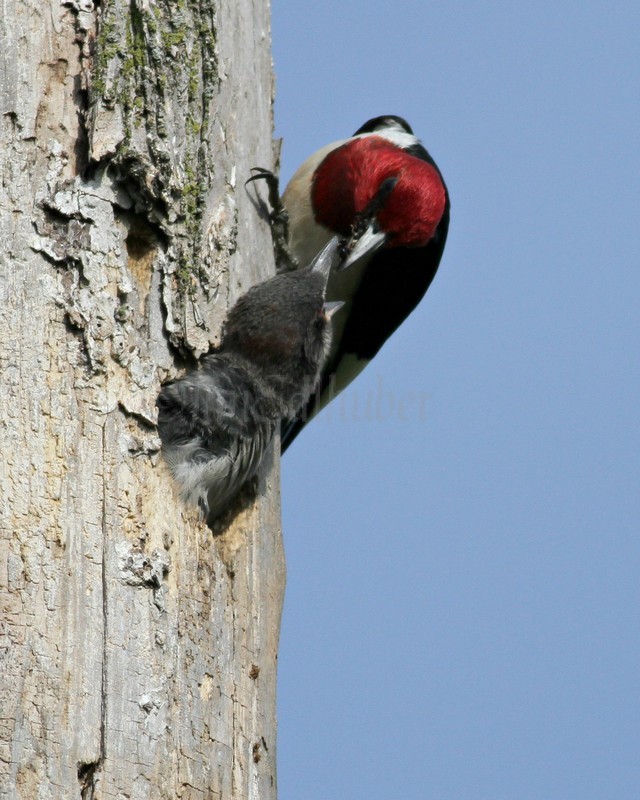
Adult bringing food to the young. As I noted, the adults draw the young closer to the nest hole opening till they are just about out of the hole to get the food
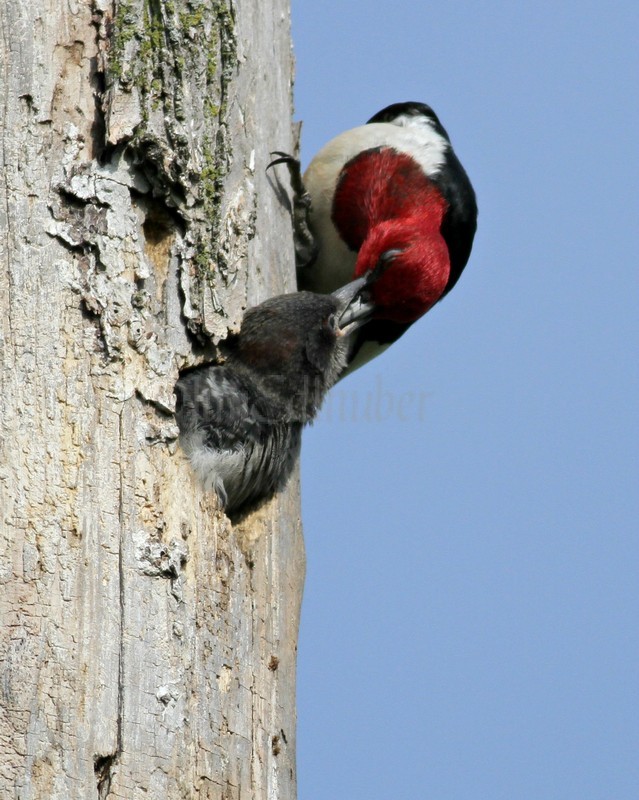
Adult bringing food to the young. As I noted, the adults draw the young closer to the nest hole opening till they are just about out of the hole to get the food
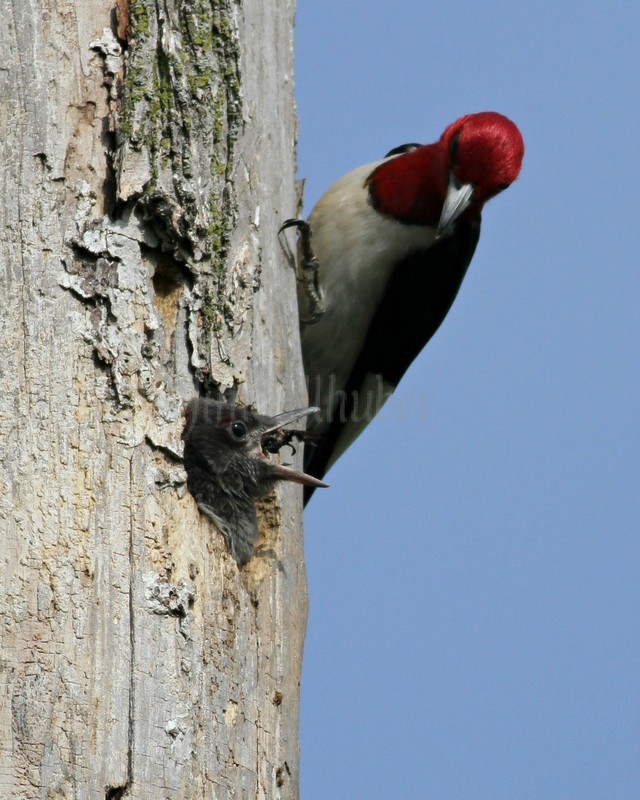
Adult bringing food to the young. As I noted, the adults draw the young closer to the nest hole opening till they are just about out of the hole to get the food
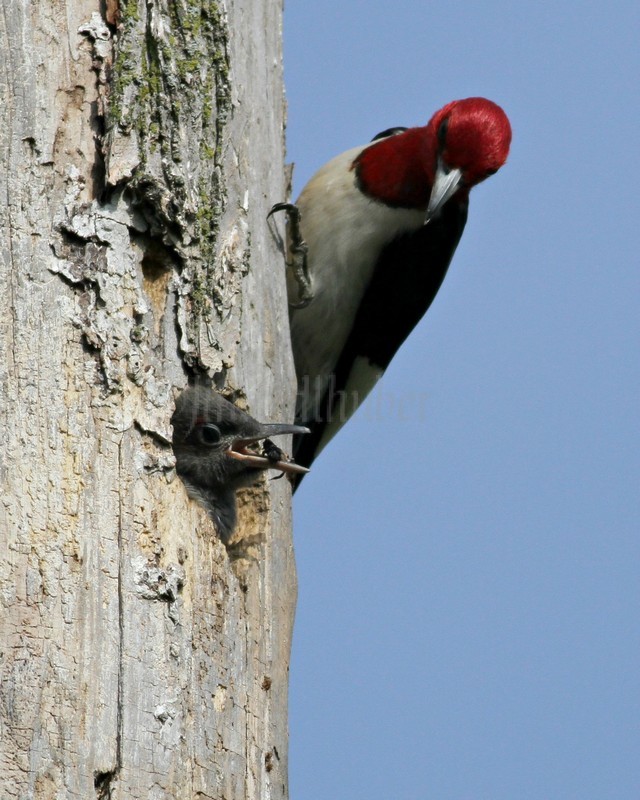
Adult bringing food to the young. As I noted, the adults draw the young closer to the nest hole opening till they are just about out of the hole to get the food
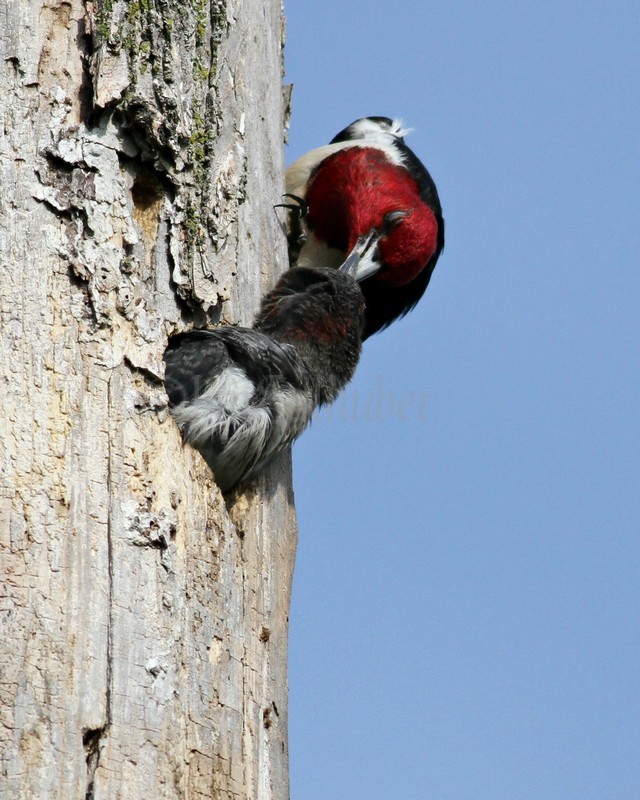
Adult bringing food to the young. As I noted, the adults draw the young closer to the nest hole opening till they are just about out of the hole to get the food. This bird is showing some for the red on the back of the head already
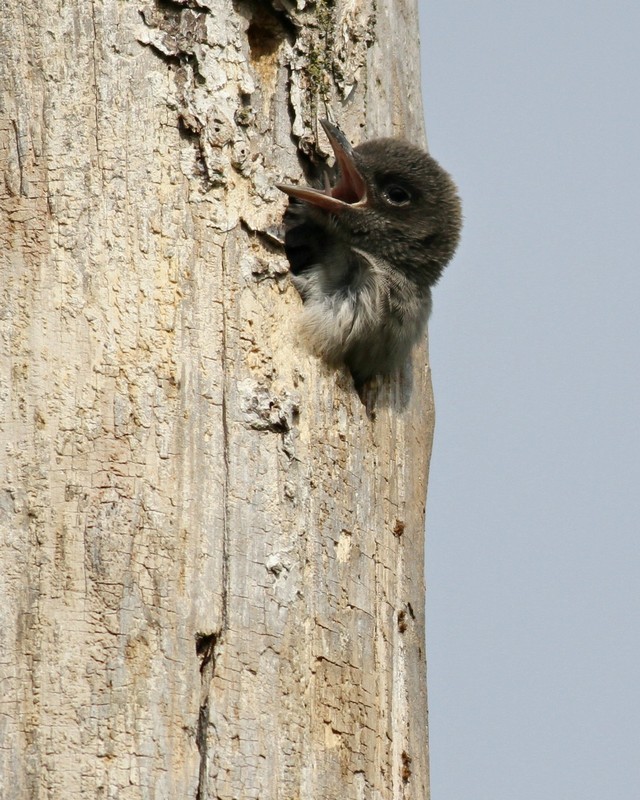
A young Red-headed Woodpecker sticks its head out of the nest hole waiting for an adult to bring in the next food
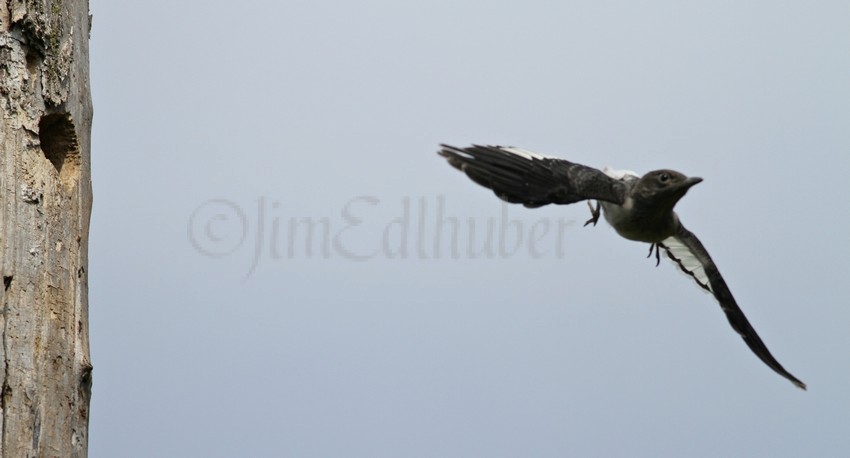
The maiden flight for this young Red-headed Woodpecker leaving the nest. It was one of 2 birds that left the nest that day
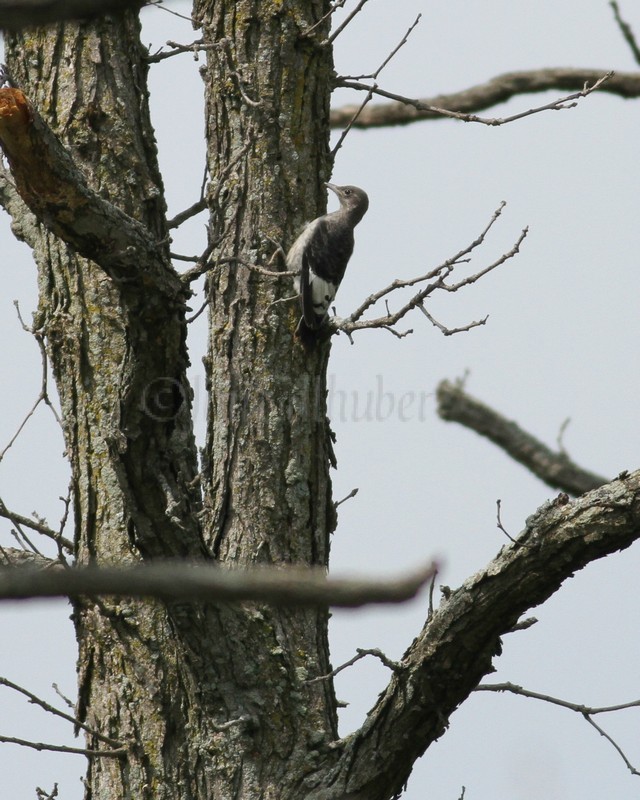
Young Red-headed Woodpecker off in a distance in some near by oaks after it left the nest. Already eating something here

On May 1, 2012, the American Avocet visited McKinley Beach at Milwaukee’s lakefront. Sometimes this bird is seen during migration if it strays from its normal course. Along with many other photographers, I was delighted to capture images of this infrequent visitor to Wisconsin.
During migration, the American Avocet doesn’t spend much time in one location, typically 24 hours or less. So if you hear about one, you best be on your way!
Binomial name: Recurvirostra americana
Category: Stilts and Avocets
Description: Black and white plumage on the body. Reddish-brown feathers on the head in summer for breeding season; white in the winter. Thin, upturned bill and long, gray legs.
Size: 16″-20″ long, 27″ – 30″ tall
Weight: 10 – 15 oz.
Habitat: Ponds, lakes, and shorelines
Diet: Crustaceans and insects
Nesting: Shallow nest near water such as shorelines or small islands. The nest may be made out of thin sticks, dried grasses, or a depression in sand. Typically 3 or 4 eggs will be laid at one time and will be incubated by both parents. The parents aggressively protect their nests. After hatching, the young will leave the nest within 24 hours and feed themselves.
Notes: The American Avocet has a tricky way of dealing with predators. When in danger, its bird call pitch may change to simulate the Doppler effect. This confuses predators into thinking the bird is approaching more quickly than it really is!
To see the full gallery of images, please click here.

Townsend’s Solitaire at Richard Bong State Recreational Area in Kenosha County Wisconsin on January 30, 2012.
Binomial name: Myadestes townsendi
Category: Thrushes
Size: 8.5” long, 14.5” wingspan
Weight: 1.2 Oz.

Binomial name: Bucephala islanddica
Category: Duck, Geese, and Swans
Size: 18” long, 28” wing span
Weight: 2.1 lb.